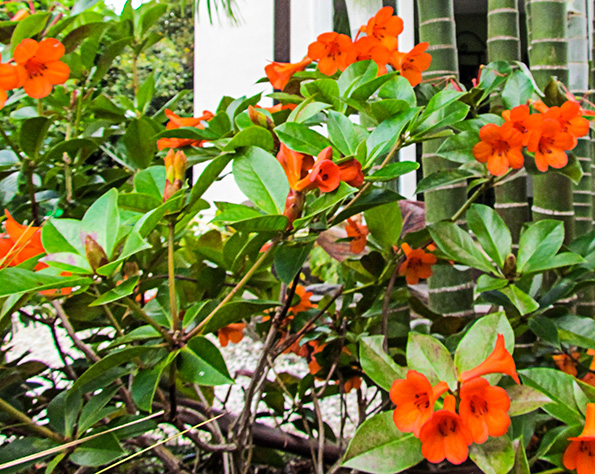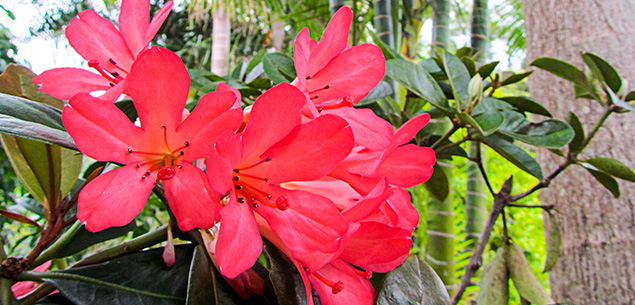One of our local nurseries had a serious sale the other day, with a vast selection of vireyas at cheap prices. These guys specialise in vireyas, so there were some super specimens for as little as $6. The only catch was, they were UFOs (unidentified flowering objects).
Like the embarrassing things we bought as teenagers that came in a plain brown wrapper, these vireyas were incognito – a big risk for someone like me who doesn’t like yellow, but at $6, I figured they were worth the risk. As I said to the horrified nursery assistant, if they turn out yellow, I can always cut the flowers off. Yes, I did mean it.
I never really rated vireyas until I came north, then I had to learn to love them because proper rhododendrons don’t like our subtropical climate. Originally from Dunedin, I’m seriously wedded to proper rhodies and I have a couple growing here, although they are making it clear it’s not their favourite environment.
So over time I’ve had to form a relationship with vireyas, and whenever I’m looking for splashes of colour in a garden design these days, they’re up there with hibiscus.

You can get these flowers in an array of colours – oranges and yellows, purple accents, red and pink combinations, as well as crimson and apricot.
Just let me say, though, that I’m not alone in taking my time to warm to vireyas. They were largely unknown until New Zealander Felix Jury embarked on a plant-hunting trip to New Guinea in 1957, and came back with the orange-gold form of the species macgregoriae and started early breeding from this plant.
Happily, Felix and subsequent members of the Jury family persevered in breeding vireyas, along with other enthusiasts, and now they come in about as many shades as a Resene colour chart. They’re noted for the purity of their shades and for their bold contrasts, plus the colours intensify as the flowers age and some are deliciously fragrant.
Native to tropical regions, they mostly grow in the cool mountainous areas, either as epiphytes high in the tall trees of the cloud forest, or in more open ground in shrubberies. They thrive in warm climates with mild summers, and while most can handle cold temperatures, frosts are a killer. They loathe wet feet and are susceptible to phytophthora, as well as other pests and diseases. Not all plain sailing, then.
On the plus side, these preferences make them good as pot plants. If you fancy the idea, pot them into terracotta or timber containers and make sure they have drainage. They don’t seem to object to root crowding, so you won’t have to continually repot them.
When they’re young, you can pinch and lightly prune to your heart’s content to get a more compact growth. After the plant is four years old, you can cut it back by a third every year.
Vireyas look amazing planted under palms with other shade lovers. They flower randomly and will sometimes surprise you with a display of colour when you’re not expecting it.
I still don’t think they’re as impressive as rhododendrons, but I have to admit that in my subtropical garden, they look better. Apart from the yellow ones, of course.

Location, location, relocation
Vireyas are dead easy to propagate. It’s easy to get cuttings to root and you don’t need rooting compound, although if you have some, it might increase your success rate. So don’t throw away the bits you’ve pruned: pot them up and make new vireyas.
The best cuttings are those that are firm, but flexible. Choose a generous-sized cutting and take a sliver off each side of the stem with a potato peeler. That’ll encourage a more balanced root system and give the plant better stability.
Put your cuttings into potting mix with no fertiliser, and put the cuttings, pot and all, inside a loose plastic bag to keep it warm.
Keep the potting mix damp, but not sopping, and you should see roots forming in about six weeks. But don’t go mad and repot or plant – you should leave the cuttings undisturbed for at least three months.




